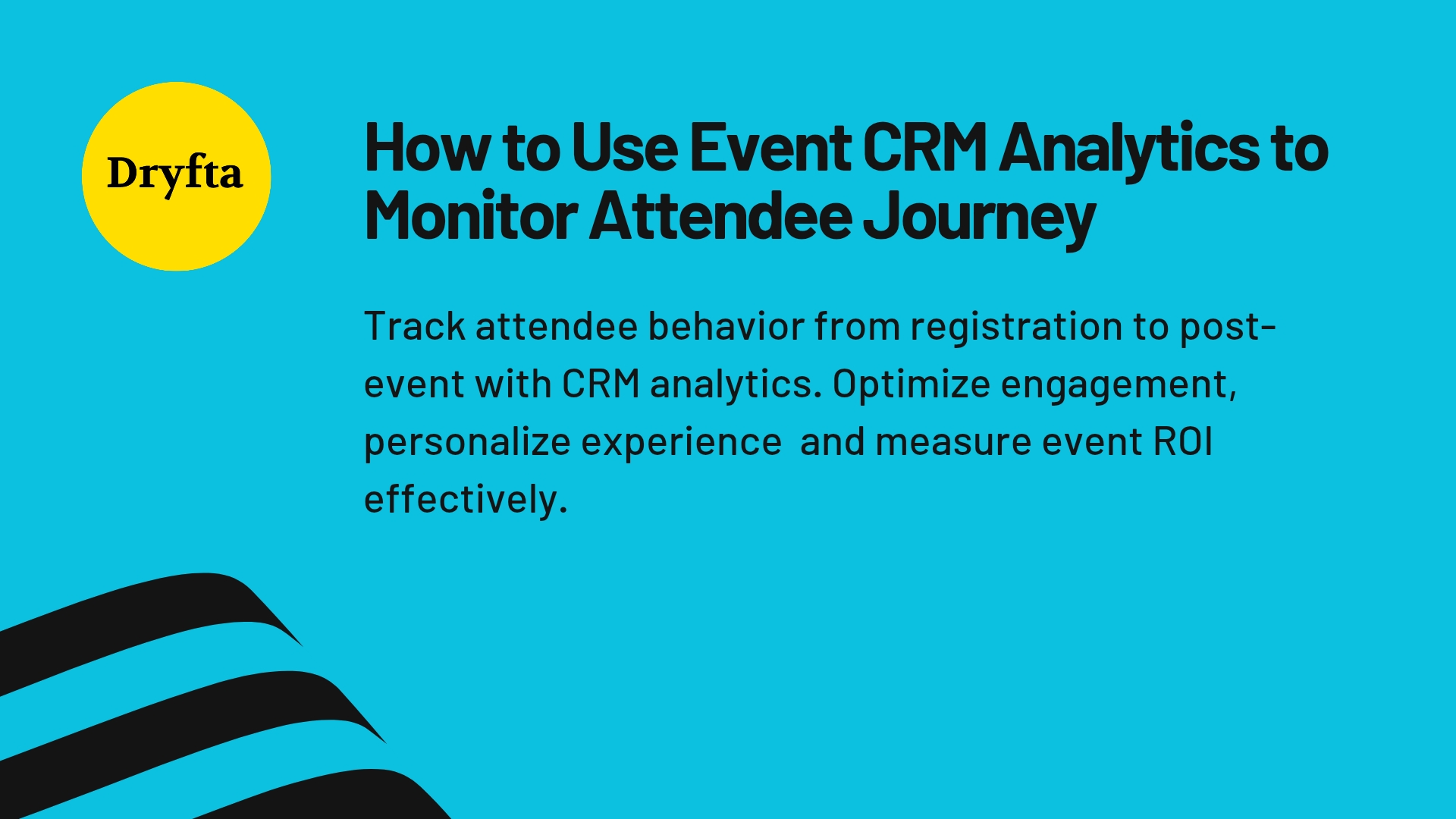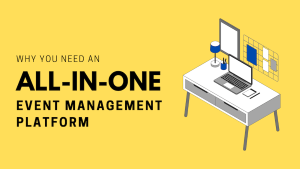
Of all the things that conference organizers struggle with, understanding attendee behavior tops the list. That being said, this is precisely what a well-implemented CRM system can help you accomplish. The academic conference world has changed dramatically over the past decade and tracking the complete attendee journey from first contact to post-event follow-up is now simpler than ever.
In this blog, let’s take a look at what comprehensive CRM analytics can tell us about attendee behavior as well as how you can use this data to improve your events.
Steering Your Event Into the Face of Data
The modern conference organizer cannot run successful events without proper analytics anymore. For the most part, CRM systems show you the complete picture of how attendees interact with your academic conference at every stage. This has got event planners realizing why guesswork and intuition alone no longer cut it in an industry that demands measurable results.
However, one metric has managed to stand out above all others: engagement tracking. The CRM system seems to have caught the attention of organizers worldwide as they can see real-time data about registration patterns, email open rates and session attendance in their dashboards. In a second dashboard view, website visit duration and page navigation paths can be monitored closely.
Tracking Discovery and Initial Awareness Gets You Real Answers
A set of analytics covering email campaigns, social media reach and website traffic captured by your CRM can make or break your marketing strategy. The data collected during the awareness phase has since become the foundation for understanding which promotional channels actually work. Your CRM should, therefore, track how people first hear about your conference.
Conference organizers using these analytics are discovering patterns in attendee discovery that were previously invisible. Set up tracking parameters in your marketing emails and social media posts. When someone clicks a link to your conference website from an email campaign, your CRM logs that interaction. This tells you which marketing channels drive the most interest and where your promotional budget should actually go.
However, other data points in the analytics dashboard are revealing surprising information about attendee behavior. One organizer has pointed out the value of tracking time spent on specific pages. If your speakers’ pages get heavy traffic but your registration page doesn’t, something is breaking the conversion path between interest and commitment.
The Submission Process Shows Who’s Seriously Interested
Despite abstract and paper submissions being the lifeblood of academic conferences, many organizers seem to remain in the dark about submission abandonment rates. Given that the submission process often starts months before the event, organizers risk losing quality papers simply because their submission form is too complicated or asks for too much information upfront.
Monitor how many people start an abstract submission but don’t complete it. A high abandonment rate tells you exactly where the friction exists. Break down where people drop off and track the time between when someone creates an account and when they actually submit. If most successful submissions happen within a few days of account creation but you see a large group who registered three weeks ago and haven’t submitted, send them a targeted reminder email with clear submission guidelines.
After submission, monitor how reviewers are interacting with submitted abstract papers.
Are certain reviewers taking significantly longer than others?
Are some consistently more critical?
This CRM data will help you spot and rectify reviewer issues before they become bottlenecks in your acceptance timeline.
Registration Patterns Can Potentially Flag Revenue Problems
As for specific academic conferences, the insights gained from registration analytics are incredibly valuable. Monitor conversion rates from acceptance to registration. If you accept 500 papers but only about 100 authors register, you need to understand why immediately.
Track which ticket types sell the most. If VIP packages aren’t moving but standard tickets sell out, maybe your premium offerings don’t provide enough perceived value. If student tickets are popular but you’re running low, consider increasing that allocation next year. The consequences for ignoring these patterns and continuing with the same pricing structure year after year are unclear. But conference organizers who’ve made this mistake are quite sure that the results, although initially subtle, can be financially grave.
Look at registration timing patterns. Do most people register right when you open registration or do they wait until the early bird deadline approaches? This tells you whether your early bird discount actually motivates behavior or just gives away money to people who would have registered anyway.
Track abandoned shopping carts in your registration system. If people add tickets to their cart but don’t complete payment, something is wrong. Maybe your checkout process is too long, payment options are limited, or unexpected fees surprise them at the last step.
Contemporary CRM Analytics
If modern CRM systems are indeed as powerful as vendors claim, then conference organizers may perhaps be the biggest beneficiaries of this technology. Bonus points for systems that come back with truly detailed and actionable insights about attendee behavior at every stage.
Pre-event engagement offers critical indicators of who will actually show up. Monitor email open rates for different message types. If your sponsor announcement emails get 15% opens but your agenda reveal emails get 55% opens, you know what content resonates with your audience. These are shocking engagement parallels for conferences that send dozens of emails leading up to the event.
Track mobile app downloads and usage patterns. If only 30% of registered attendees download your conference app, you’re missing a major communication channel. Look at which sessions people add to their personal schedules in the app. This data shows you which topics and speakers create the most interest before the event even begins. It also helps you predict room sizes needed for different sessions and identify potential scheduling conflicts.
Pay attention to the networking feature usage. If your platform offers attendee directories or meeting scheduling, but only 10% of people use them, either the features are hard to find or attendees don’t see the value. Test different promotional approaches and track what increases adoption.
The Post-Event Phase Remains Surprisingly Underutilized by Most Organizers
Despite post-event analytics having been available in CRM systems for years now, many conference organizers seem to ignore this goldmine of information. The data collected after your event tells you about long-term satisfaction and whether attendees will return next year.
Track survey completion rates and response patterns. If only 10% of attendees complete your post-event survey, you’re working with statistically limited data. Test different survey lengths and timing and offer incentives for completion. Make the process as simple as possible. By doing so, you’ll get a more representative sample of attendee opinions.
When people do respond, look for patterns in feedback about specific sessions, venues or organizational aspects. Are multiple attendees complaining about the same issues?
Track social media mentions and engagement.
Are your attendees posting about your conference positively?
Are they tagging colleagues and encouraging them to attend next year?
CRM Analytics Deserve A Space in Your Planning Process
CRM analytics picked up by modern systems tell us everything about what works and what doesn’t in conference management. Academic event CRM analytics, in particular, has changed how we understand and improve the attendee experience. Every interaction creates data that tells you something valuable about behavior patterns and satisfaction levels.
The conferences that succeed are the ones that pay attention to this data and act on it systematically. Stop making decisions based on gut feeling or limited feedback from a few vocal attendees. Use your CRM to see the complete picture of how hundreds or thousands of people experience your conference. Optimize continuously based on what the metrics show you.
If you are an event planner who has been organizing conferences with one hand tied behind your back, it is about time to stop guessing and start knowing. Dryfta’s CRM system was built upon the experiences, inputs and feedback of organizers who’ve managed academic conferences and understand exactly what data you need. These are not just vanity metrics that will look impressive in your board meetings. At Dryfta, we’ve been paying attention to behavioral intelligence that puts you right at the top of the game. Book a demo with us and see what your attendees have been trying to tell you through their behavior all along. The data is already there; you just need the right system to see it.




